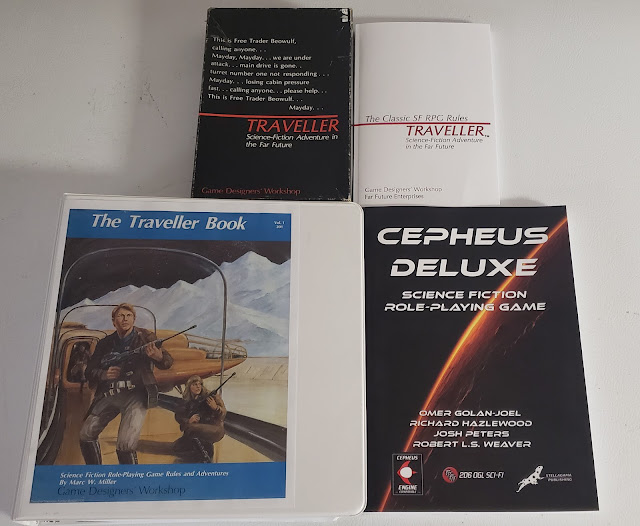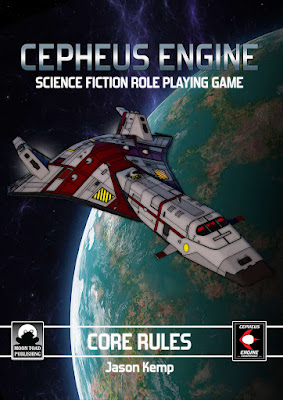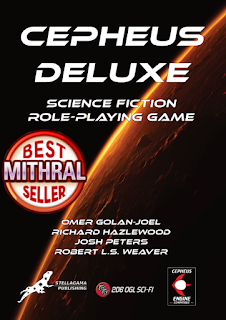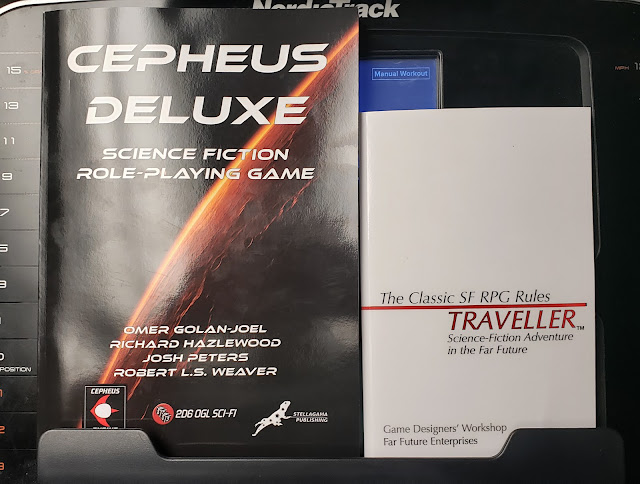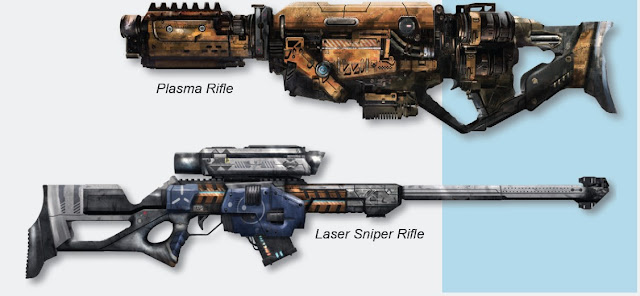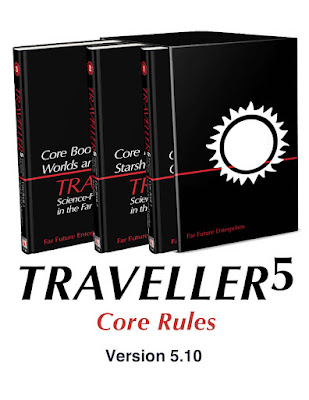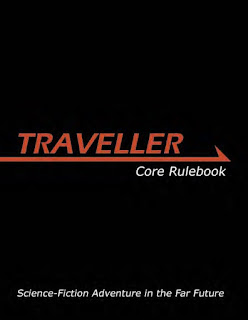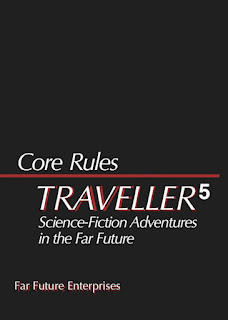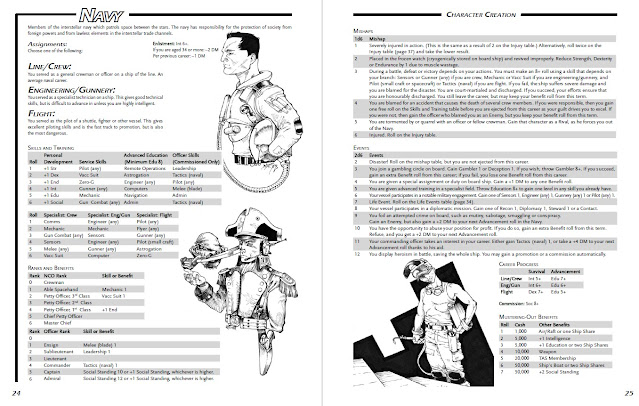
It was with no little disappointment that Cubicle Seven Entertainment announced in November, 2019 that it would no longer be publishing
The One Ring: Adventures Over The Edge Of The Wild, the hobby’s fourth and most critically acclaimed attempt to create a roleplaying game based on J.R.R. Tolkien’s Middle-earth. Originally published in 2011, fans had been looking forward to the second edition of the game, which was being worked on at the time of the announcement. When in 2020, Swedish publisher,
Free League Publishing—best known for
Tales from the Loop – Roleplaying in the '80s That Never Was,
Alien: The Roleplaying Game, and
Symbaroum—announced that it had acquired the licence, there was some concern that its forthcoming edition would be based on its Year Zero mechanics. However, Free League Publishing made clear from the start that this was not the case, and so the good news is that following a successful
Kickstarter campaign,
The One Ring, Second Edition not only retains its original design and writing team, but also the same mechanics—with some updates, and it receives its very own introductory boxed set,
The One Ring Starter Set.
With
The One Ring: Roleplaying in the World of Lord of the Rings the changes from
The One Ring: Adventures Over The Edge Of The Wild are more thematic and setting than to the rules, but they can all be seen as an evolution rather than a radical shift. The two major changes are to the date when it is set and to its location. Both take place between the events of
The Hobbit and
The Lord of the Rings, with
The One Ring: Adventures Over The Edge Of The Wild opening in year 2946 of the Third Age, exactly five years after the Battle of the Five Armies and with the death of Smaug, there was a definite sense of hope to be found in many of the cultures across Middle-earth. Yet as the years passed, darkness crept back into the world and in the Twilight of the Third Age as the War of the Ring lies ahead, and rumours spread of strange and fell things moving abroad once again, and hope began to ebb once again.
The One Ring: Roleplaying in the World of Lord of the Rings begins in the period, in the year 2965—notably five years after the start of ‘The Conspiracy of the Red Book’ campaign found in
The One Ring Starter Set. The shift in location is from Rhovanion, the region to the East of the Misty Mountains which was the main focus for
The One Ring: Adventures Over The Edge Of The Wild, to Eriador, the region to the West of the Misty Mountains. With supplements such as
Rivendell,
Bree, and
Ruins of the North, parts of Eriador had been explored, but no further. Here though, the focus has been expanded to take in all of Eriador, from Rivendell in the east to the Lindon and the coast in the west, from the Ettin Moors in the north to Dunland in the south. At the heart of the region, astride the Great Eastern Road stand The Shire and Breeland, and these are likely starting point for any campaign of
The One Ring: Roleplaying in the World of Lord of the Rings.
The second edition of the roleplaying also introduces new Cultures and Callings, which are like Races and Classes. The Bardlings are Northmen of noble origins from across the Misty Mountains, journeying once again after the death of Smaug, whilst the Dwarves of Durin’s Folk, are also travelling with renewed purpose, their having reclaimed the Kingdom Under the Mountain. Those native to Eriador include Elves of Lindon, members of the Firstborn who rarely leave the Grey Havens; Hobbits of the Shire, happy and conservative who would prefer that world around them—or at least The Shire—remain unchanged; Men of Bree, who accept many visitors to villages, but rarely leave; and the Rangers of the North, who patrol the North in secret to keep it safe from threats despite their low numbers. The seven Callings are the Captain, who commands and leads through trust; the Champion is a valiant warrior; the Messenger who carries news and missives between settlements despite the increasing difficulties in journeying across Middle-earth; the Scholar who loves learning and the past; the Treasure Hunter seeks out the heritage of Dwarven Kings and Elven Lords, often lost to hoards guarded by fell beasts and hordes of Orcs; and the Warden, who works to protect those who cannot against the dangers beyond civilisation.
A Player-hero in
The One Ring: Roleplaying in the World of Lord of the Rings is defined by three Attributes—Strength, Heart, and Wits. Each Attribute value, rated between two and seven, determines the Target Number for skill rolls with its six associated skills (meaning that there is a total of eighteen skills), these rated between one and six. He also has points in Wisdom and Valour, the former representing a Player-hero’s trust in himself and his abilities and good judgement, the latter, his courage. To create a Player-hero, a player chooses a Culture and a Calling, then spends extra Experience Points to customise him, assigns equipment, and lastly selects his rewards for his Wisdom and Valour. A Calling provides a Cultural Blessing, a Standard of Living, an array of Attribute values to chose or roll randomly, a set of base skills and combat proficiencies, Distinctive Features to choose from, and a choice of names. To this are added Favoured Skills, an additional Distinctive Feature, and a Shadow Path, the latter the fate the Calling can result in if a Player-hero fails to resist the Shadow’s influence. For example, a Champion might be beset by the Curse of Vengeance and the Messenger by Wandering-Madness.
Daisy Appledore is a Bree-lander whose family often worked in the Prancing Pony where as a girl she learned of news and things from here and there. This aroused her curiosity and she wanted to find out more about the world, beginning to read books when she could find them and asking questions of other when she could not. Her family would prefer it if she settled down and took up a trade, but does not want to become a cook or serving girl like her mother and sisters, even though she could. She knows she will have to travel and find books and scrolls if she is to satisfy her curiosity.
Name: Daisy Appledore
Culture: Men of Bree Standard of Living: Common
Cultural Blessing: Bree-Blood (Add one to Fellowship rating)
Calling: Scholar Shadow Weakness: Lure of Secrets
Distinctive Features: Fair-Spoken, Inquisitive, Rhymes of Lore
– ATTRIBUTES –
Strength: 4 (TN: 16)
Heart: 4 (TN: 16)
Wits: 6 (TN: 14)
– SKILLS –
Awe 0 Enhearten 2 Persuade 2
Athletics 1 Travel 1 Stealth 1
Awareness 1 Insight2 Scan 2
Hunting 1 Healing 0 Explore 2
Song 1 Courtesy 3 Riddle 2
Craft 3 Battle 0 Lore 2
– COMBAT PROFICIENCIES –
Spear 2, Bows 1
Valour: 1 (Reward: Close Fitting Mail)
Wisdom: 1 (Virtue: Prowess – Strength)
– GEAR –
Travelling gear, Bow & Arrows, Dagger, Spear, Shield, Mail Shirt (Armour 2d) & Helm (+1 Armour)
Endurance 24 Hope 14 Parry 16
Mechanically, like its forebear,
The One Ring: Roleplaying in the World of Lord of the Rings uses dice pools formed of six-sided dice and the twelve-sided Feat die. The six-sided Success dice are marked with an Elven Rune for ‘1’ on the six face, whilst the Feat dice is marked one through ten, and one face with the ‘Eye of Sauron’ Icon and one face with the ‘Gandalf’ Rune. When rolled, these can all together give various results. A simple numerical total that beats a Target Number is a standard success, but if the roll beats a Target Number and one or more Elven Runes are rolled, they indicate a Great or even an Extraordinary success. If the ‘Eye of Sauron’ Icon is rolled, this is the worst result and does not contribute anything towards the roll. Conversely, if the ‘Gandalf’ Rune is rolled, this is the best result and the action automatically succeeds, even if the total does not beat the target number.
The Target Number itself is determined by a Player-hero’s Attributes, either Strength, Heart, or Wits, depending upon if the player is rolling for a skill, combat proficiency, Wisdom, or Valour. In addition, if a skill is Favoured or Ill-favoured, a player rolls two Feat dice, counting the higher result if Favoured, the lower if Ill-favoured. Extra Success dice can be purchased and rolled through the expenditure of Hope.
Combat uses the same mechanics, but uses a Player-hero’s Combat Proficiencies—either Axes, Bows, Swords, or Spears, which are rolled against the Target Number derived from his Strength. This is modified by the enemy’s Parry rating. Damage inflicted is deducted from a Player-hero’s Endurance, which can result in him being Weary if his Endurance is knocked below his Load (essentially what he is carrying), and knocked out if it is reduced to zero. However, adversaries cannot become Weary, but are knocked out or eliminated when their Endurance is reduced to zero. If one or more Elven ‘1’ Runes are rolled on the Success dice, they can spent to inflict Heavy Blows and more Endurance damage, Fend Off the next attack against you, Pierce armour and potentially do a Piercing Blow, which is definitely inflicted if a ten or a ‘Gandalf’ Rune is rolled. If a Piercing Blow is struck, the defendant’s player rolls to see if his Player-hero’s armour protects him. Wounded Player-heroes recover Endurance slowly and are knocked out if a second Wound is suffered. Adversaries are typically killed by Wounds. Stance, whether Forward, Open, Defensive, or Rearward also affects combat,
The One Ring: Roleplaying in the World of Lord of the Rings is played in two distinct phases—the Adventuring Phase and the Fellowship Phase, both undertaken by the Fellowship formed by the Plaeyr-heroes. The Adventuring Phase is when traditional roleplaying tasks take place, primarily built around the Combat, Council, and Journey activities. The Council and Journey activities very much model what happens in the fiction. The Council activity sees the Player-heroes entreaty with those who hold power, perhaps to gain information or aid. For example, the Fellowship might approach Círdan the Shipwright for information about some ruins said to be in the Dark Lands west of Minhiriach or approach a Dwarven overseer to enter a mine. Mechanically, this involves skill tests made against social skills such as Awe, Courtesy, Persuade, and Song, but best combined with good roleplaying.
The Journey mechanics model the long trips that the Fellowship will be making across the rough, inhospitable, and often hostile lands of Middle-earth. A travelling company requires four roles to be fulfilled, Guide, Hunter, Look-Out, and Scout, and in these roles, the Player-heroes to determine the nature of the encounters they might have and where they do along the journey. Depending on location, these can result in the members of the Fellowship suffering Wounds or gaining points of Shadow, or a chance-meeting or viewing a Joyful Sight. In addition, all members of the Fellowship are required to make a Travel skill test as they tire themselves and gain them fatigue. The rules provide some basic encounters, but the Loremaster will need to develop them before play and probably add more for later journeys.
The Fellowship Phase place between adventures, typically at the end of a Season. Mechanically, this an opportunity for the players to improve Player-heroes and have them recover from injury—both physical and spiritual. They can also select Undertakings, some of which can be done during any Fellowship Phase, but others only during the ‘Yule’ Fellowship Phase. The former, such as ‘Gather Rumours’, ‘Meet Patron’, ‘Ponder Storied and Figured Maps’, and ‘Write Song’, really affect the next season, whilst the latter, like ‘Heal Scars’, ‘Raise an Heir’, and ‘Recount a Story’ have longer term consequences, often having an effect which lasts years. For the most part, winters are spent recovering and reflecting upon previous adventures, and preparing for the next, so typically there will be three Adventuring Phases and three Fellowship Phases per year.
For the Loremaster there is advice on running
The One Ring: Roleplaying in the World of Lord of the Rings as well as tools for doing so. Most notably they include the Shadow, the fell, foul influence of the darkness personified by Sauron himself. A Player-hero can gain points of Shadow through dread, greed, misdeeds, and sorcery, potentially leading to madness and flaws, and pushing them down the path of his Shadow Weakness. Balancing a Player-hero’s Shadow Points are his points of Hope, but the effects of the Shadow can overcome his Hope should he gain too many. Again, this enforces the feel of Middle-earth and Tolkien’s fiction as well as giving evil a tangible effect. Later on in a campaign when the Player-heroes have made a name for themselves, the Loremaster can bring the Eye of Mordor into play and have them full under the effects of Sauron’s baleful glance.
For the Loremaster there is advice on running
The One Ring: Roleplaying in the World of Lord of the Rings as well as tools for doing so. Most notably they include the Shadow, the fell, foul influence of the darkness personified by Sauron himself. A Player-hero can gain points of Shadow through dread, greed, misdeeds, and sorcery, potentially leading to madness and flaws, and pushing them down the path of his Shadow Weakness. Balancing a Player-hero’s Shadow Points are his points of Hope, but the effects of the Shadow can overcome his Hope should he gain too many. Again, this enforces the feel of Middle-earth and Tolkien’s fiction as well as giving evil a tangible effect.
The list of adversaries in of
The One Ring: Roleplaying in the World of Lord of the Rings is quite short—Evil Men, Orcs, Trolls, Undead, and Wolves of the Wild, but this is more than sufficient. In terms of setting, there is some unavoidable repetition between the description of The Shire in
The One Ring: Roleplaying in the World of Lord of the Rings and
The One Ring Starter Set, but the core rulebook expands to cover the whole of Eriador, including Angmar, The Barrow-Downs, the Blue Mountains, Bree-Land, The Ettenmoors, The Great East Road, The Greenway, Lake Evendim, Lindon, Mount Gram, The North Downs, The South Downs, Tharbad, The Trollshaws, and The Weather Hills. It includes numerous NPCs, encounter tables, and location specific adversaries. There are some nice touches here too, such as the Summer Smoke Ring Festival, which the Player-heroes can participate in and the common practice of tossing a coin down the well in Bree’s Old Town Well for luck before leaving on a journey. Added to this are Patrons, such as Balin, son of Fundin, Círdan the Shipwright, and even Bilbo Baggins and Tom Bombadil and Lady Goldberry, who in adopting the Player-heroes will grant them Fellowship Bonuses and advantages, but at the same time, providing the Loremaster with ready NPCs to spur the Player-heroes onto further danger and adventure. Once such site of danger and adventure is described in ‘The Star of the Mist’, a landmark in the foothills of the southern Ered Luin. It is not a full adventure itself, but somewhere to be explored, full of dark secrets, more of an adventure site, much like that found in
Forbidden Lands – Raiders & Rogues in a Cursed World. It should provide two or three session’s worth of play, but the Loremaster will need to create a reason for the Player-heroes to be in the area.
If there is one single issue with
The One Ring: Roleplaying in the World of Lord of the Rings, it is simply the lack of examples. There are hardly any examples of play, none of combat, and none of sample Player-heroes. For anyone with any roleplaying experience or experience having played
The One Ring: Adventures Over The Edge Of The Wild, this is should not be an issue. However, if new to the hobby or this roleplaying game, working out what is going on will be a whole lot more difficult.
Physically,
The One Ring: Roleplaying in the World of Lord of the Rings is very cleanly presented in a clear, open style, and the content itself is engaging to read. In particular, the maps are excellent, done in a style reminiscent of Tolkien and will satisfy any Tolkien fan. There are numerous quotes taken from his fiction throughout the book and these add to its feel and flavour. The artwork is also very good, a pen and ink style that captures the old-world rustic charm of the Shire and the region surrounding it. The style and look echoes that of the classic editions of
The Lord of the Rings trilogy published by Allen & Unwin, and has a more scholarly feel as if Bilbo himself sat down to write it.
As an update,
The One Ring: Roleplaying in the World of Lord of the Rings has been mechanically streamlined and given a nip and tuck here and there. Thematically, the shift to Eriador is more open, windswept, and further away from the darkness which pervaded Rhovanion, east of the Misty Mountains. This not to say that the region is without its dangers or sense of foreboding, far from it, but there is more scope for both the Loremaster and the publisher to develop their own content and perhaps avoid running into an abundance of canon.
Fans of both Middle-earth and the previous version of the roleplaying game,
The One Ring: Adventures Over The Edge Of The Wild, will enjoy this new edition just as much, opening up as it does a whole region to explore and moving it on a few decades to give new dangers to face and the Free Peoples of the West to help keep safe. Ultimately,
The One Ring: Roleplaying in the World of Lord of the Rings is a fantastic update of arguably what was the best roleplaying game to date to be set in Middle-earth. Which means it still is.
—oOo—
 Free League Publishing
Free League Publishing will be at
UK Games Expo which takes place from Friday, June 3rd to Sunday, June 5th, 2022.
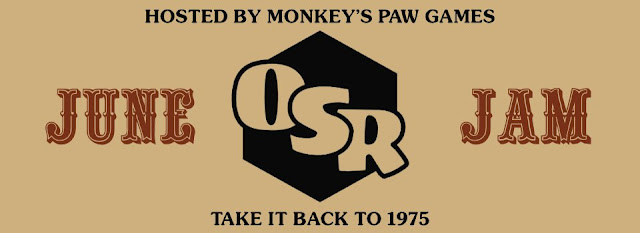 https://itch.io/jam/osr-june-jam
https://itch.io/jam/osr-june-jam